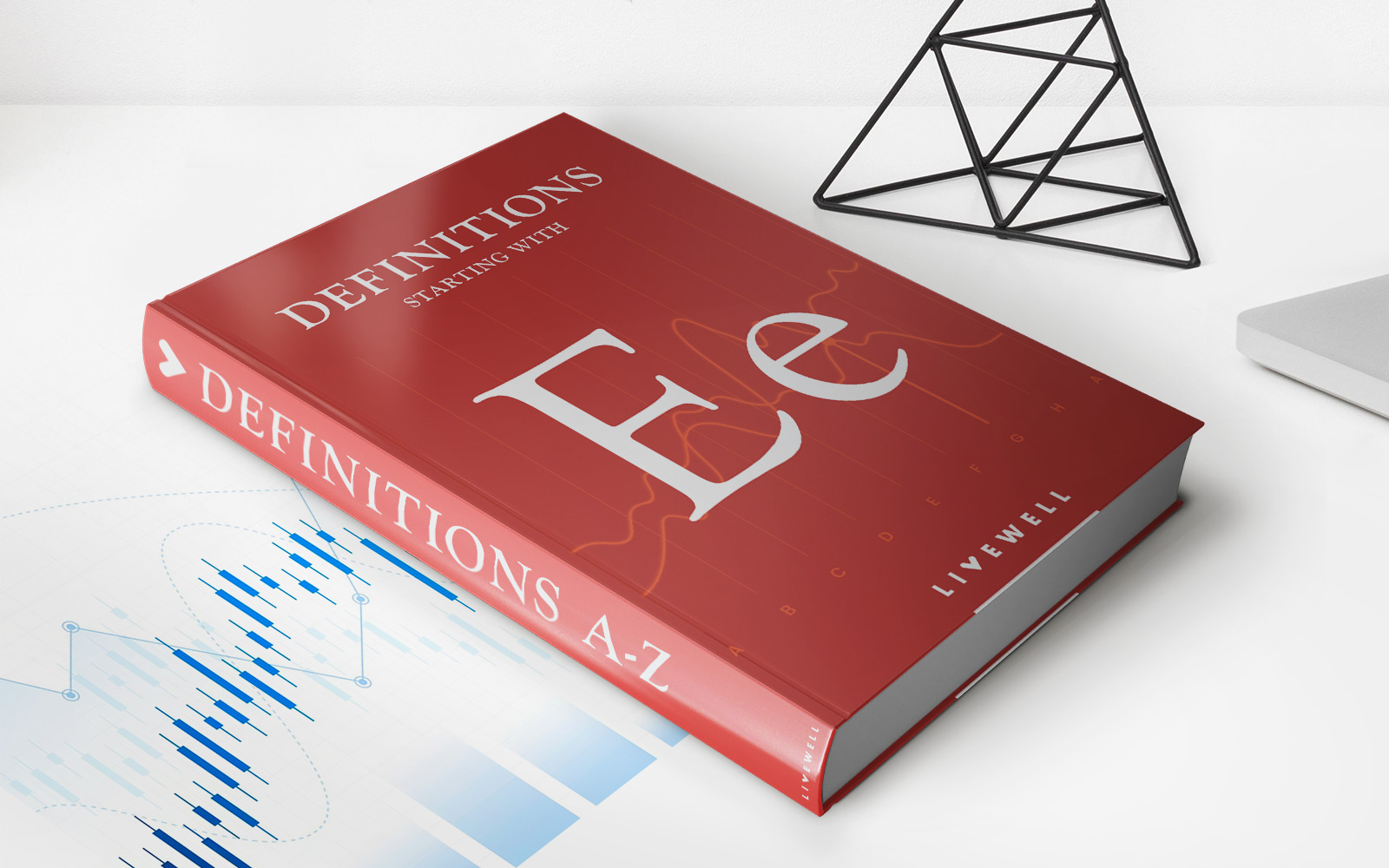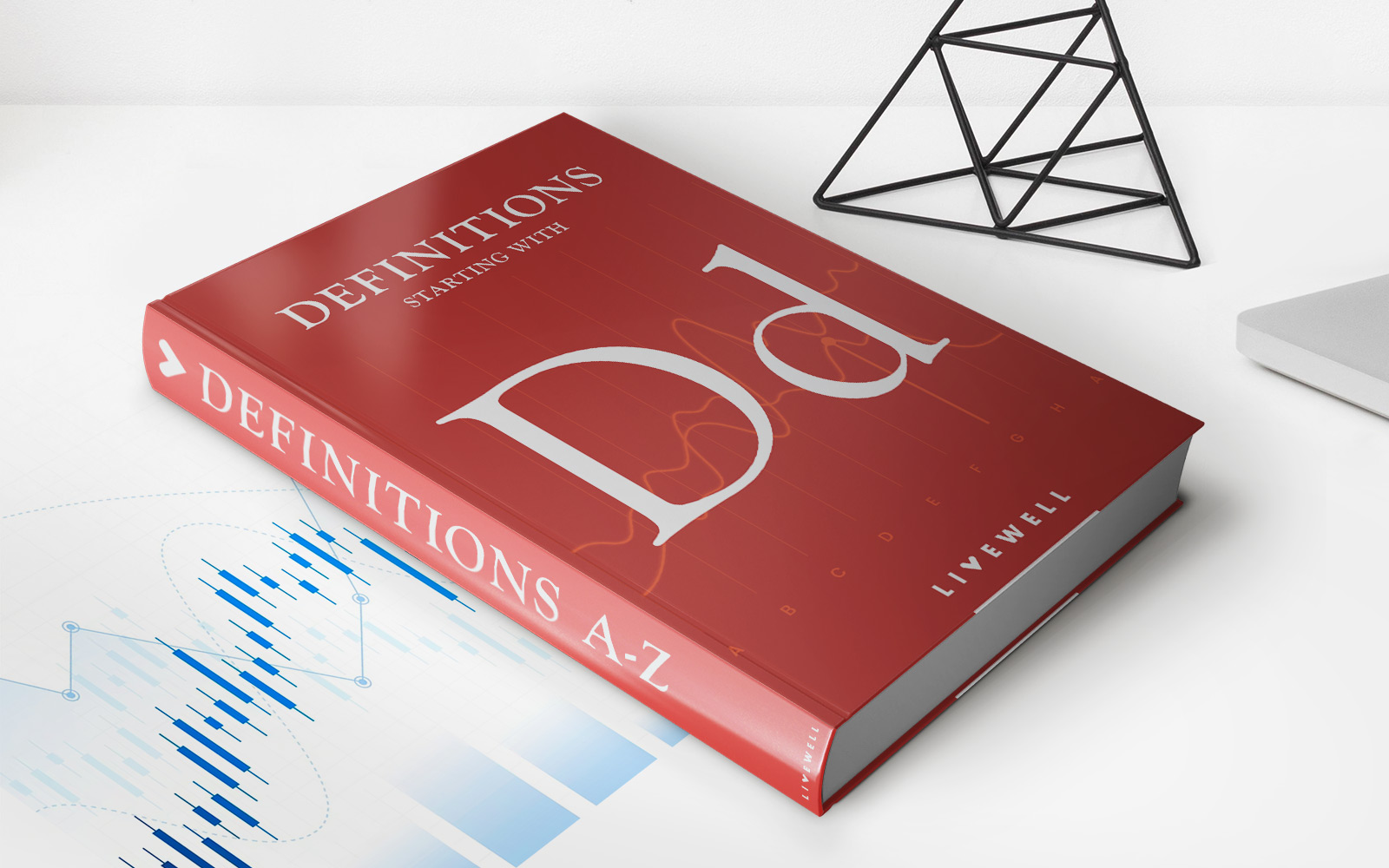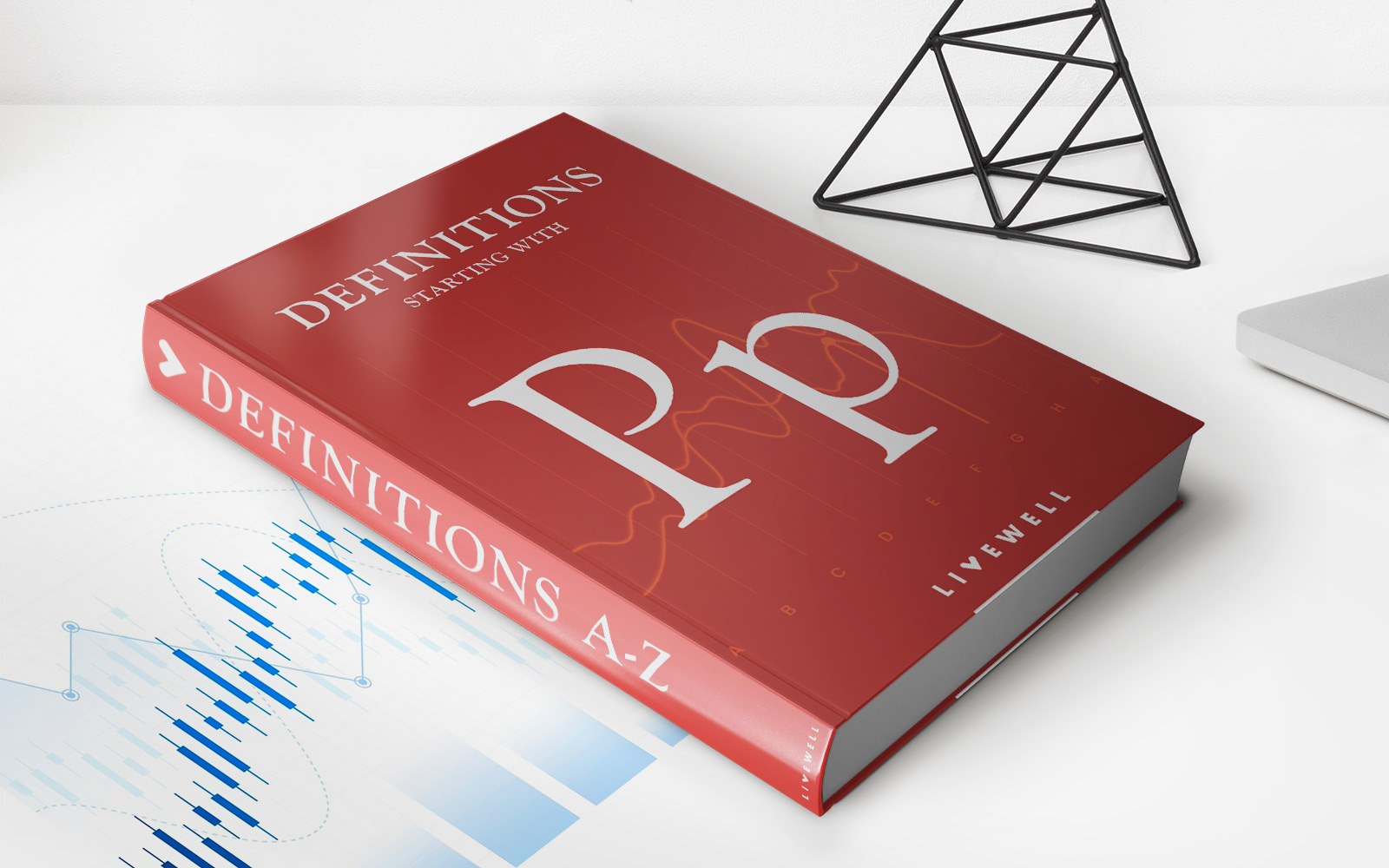

Finance
How To Use Life Insurance To Build Wealth
Modified: February 21, 2024
Learn how to use life insurance as a powerful tool for building wealth and securing your financial future. Discover expert strategies and maximize your financial potential in the field of finance.
(Many of the links in this article redirect to a specific reviewed product. Your purchase of these products through affiliate links helps to generate commission for LiveWell, at no extra cost. Learn more)
Table of Contents
- Introduction
- Understanding Life Insurance
- Different Types of Life Insurance
- Using Life Insurance as an Investment Tool
- Benefits of Using Life Insurance to Build Wealth
- Factors to Consider Before Using Life Insurance to Build Wealth
- Strategies for Using Life Insurance to Build Wealth
- Case Studies: Real-life Examples of Building Wealth with Life Insurance
- Common Mistakes to Avoid When Using Life Insurance to Build Wealth
- Conclusion
Introduction
Life insurance is often seen as a way to protect your loved ones financially in the event of your death. But did you know that life insurance can also be a powerful tool for building wealth? When used strategically, life insurance can provide remarkable benefits beyond its traditional purpose.
In this article, we will explore how you can leverage life insurance to build wealth and secure your financial future. We will delve into different types of life insurance, discuss the benefits of using it as an investment tool, and highlight key factors to consider before incorporating it into your wealth-building strategy.
While life insurance is not typically associated with wealth creation, it offers unique advantages that make it an attractive option for those seeking to build financial security. By understanding the various possibilities and utilizing effective strategies, you can unlock the potential of life insurance to enhance your overall wealth portfolio.
Whether you are just starting your financial journey or looking for ways to diversify your investment portfolio, this article will provide you with valuable insights and actionable advice on how to utilize life insurance as a wealth-building tool. Let’s dive in!
Understanding Life Insurance
Before delving into using life insurance to build wealth, it is essential to have a clear understanding of what life insurance is and how it works.
Life insurance is a contract between an individual and an insurance company. The insured person pays regular premiums in exchange for a sum of money, known as the death benefit, which is paid out to the beneficiaries upon the insured person’s death. This death benefit can help provide financial protection and support for their loved ones in the event of their passing.
Life insurance policies typically fall into two categories: term life insurance and permanent life insurance. Term life insurance provides coverage for a specific period, usually ranging from 10 to 30 years. It offers a straightforward death benefit and is often more affordable than permanent life insurance. On the other hand, permanent life insurance provides coverage for the insured person’s entire life, as long as the premiums are paid. It also accumulates a cash value component, which can be utilized during the insured person’s lifetime.
It’s important to note that life insurance is not an investment product in the traditional sense. The primary purpose of life insurance is to provide financial protection and peace of mind for the insured and their beneficiaries. However, certain types of life insurance policies offer additional features that allow them to serve as a vehicle for wealth accumulation over time.
Having a solid understanding of the fundamentals of life insurance is crucial before exploring how to use it as a tool for building wealth. By knowing the different types of life insurance and their underlying mechanics, you can make informed decisions about which policy aligns best with your financial goals and circumstances.
Different Types of Life Insurance
When considering life insurance as a tool for wealth building, it’s important to explore the different types of policies available. Understanding the characteristics and benefits of each type can help you determine which one aligns best with your financial goals and risk tolerance.
1. Term Life Insurance:
Term life insurance provides coverage for a specific period, typically ranging from 10 to 30 years. It offers a straightforward death benefit and is often the most affordable option for life insurance. Term life insurance is ideal for individuals looking for temporary coverage to protect their loved ones during their working years or a specific financial obligation, such as paying off a mortgage or funding a child’s education.
2. Whole Life Insurance:
Whole life insurance is a type of permanent life insurance that provides coverage for the insured person’s entire life. It offers a death benefit as well as a cash value component that grows over time. The premiums for whole life insurance are typically higher than term life insurance but remain level throughout the policy’s lifetime. The cash value component accumulates on a tax-deferred basis and can be accessed through policy loans or withdrawals. Whole life insurance is suitable for individuals who want lifelong coverage and the potential for cash value accumulation.
3. Universal Life Insurance:
Universal life insurance is another type of permanent life insurance that combines a death benefit with a cash value component. It offers greater flexibility than whole life insurance by allowing policyholders to adjust their premium payments and death benefit amounts. Universal life insurance policies also earn an interest rate on the cash value component, which can fluctuate based on market conditions. This type of policy is suitable for individuals seeking financial flexibility and the potential for higher returns.
4. Variable Life Insurance:
Variable life insurance is a form of permanent life insurance that offers a death benefit and a cash value component tied to investment options. Policyholders have the opportunity to allocate their cash value among various investment options, such as stocks, bonds, and mutual funds. The cash value and death benefit can fluctuate based on the performance of the investment options selected. Variable life insurance is suitable for individuals with a higher risk tolerance who want the potential for greater investment growth while still having the protection of life insurance.
Each type of life insurance has its own unique features, benefits, and considerations. It’s important to carefully evaluate your financial goals, risk tolerance, and affordability before choosing the most appropriate policy for your wealth-building strategy.
Using Life Insurance as an Investment Tool
Life insurance can be utilized as an investment tool to help grow wealth over time. Certain types of life insurance policies offer a cash value component that accumulates over the policy’s lifetime. This cash value can be accessed or utilized in various ways, providing additional financial opportunities and benefits.
One way to use life insurance as an investment tool is by taking advantage of the cash value component. This component grows tax-deferred, meaning you won’t have to pay taxes on the growth until funds are withdrawn or accessed. The cash value can be used to supplement retirement income, fund education expenses, or even serve as an emergency fund. With careful planning and consideration, the cash value component can provide a valuable source of liquidity and financial flexibility.
Another benefit of using life insurance as an investment tool is the ability to leverage the death benefit. Since the death benefit is typically tax-free to the beneficiaries, it can provide a significant source of wealth transfer and financial protection. This is especially beneficial for individuals with high net worth, as it allows them to pass on wealth to their loved ones without incurring hefty estate taxes. Additionally, some policyholders may choose to use the death benefit as collateral for loans or as a source of liquidity in times of financial need.
Moreover, life insurance can serve as a powerful asset protection tool. In some cases, the cash value and death benefit of a life insurance policy are protected from creditors and legal claims. This means that even in challenging financial circumstances, the policyholder’s beneficiaries can still receive the intended benefits of the policy.
It’s important to note that using life insurance as an investment tool requires careful planning and consideration. Policyholders should work closely with their financial advisors to understand the potential risks, costs, and benefits associated with incorporating life insurance into their investment strategy.
By leveraging the cash value component, maximizing the death benefit, and utilizing the asset protection features, life insurance can prove to be an effective tool for long-term wealth building. However, it’s essential to balance the benefits of life insurance with other investment options and financial goals to ensure a comprehensive and diversified approach to building wealth.
Benefits of Using Life Insurance to Build Wealth
Using life insurance as a wealth-building tool offers several notable benefits. Understanding these advantages can help you make informed decisions about incorporating life insurance into your financial strategy.
1. Tax Advantages:
One significant benefit of using life insurance to build wealth is the potential tax advantages it offers. The cash value growth within a life insurance policy is typically tax-deferred, meaning you won’t have to pay taxes on the growth until funds are withdrawn or accessed. This can provide a substantial advantage compared to other taxable investment vehicles. Additionally, the death benefit of a life insurance policy is generally received tax-free by the beneficiaries, ensuring the preservation of wealth for future generations.
2. Asset Protection:
Life insurance can serve as an effective asset protection tool. In some cases, the cash value and death benefit of a life insurance policy are protected from creditors and legal claims. This means that even in challenging financial situations, the policyholder’s beneficiaries can still receive the intended benefits of the policy, providing a valuable safety net.
3. Protection Against Market Volatility:
Life insurance provides a level of stability and protection against market volatility. While other investment vehicles may fluctuate with market conditions, the cash value component of a life insurance policy often grows at a guaranteed minimum rate. This stability can help safeguard wealth and provide a reliable long-term investment option.
4. Flexibility and Liquidity:
Life insurance policies offer flexibility and liquidity. Depending on the policy type and its provisions, the cash value can be accessed through policy loans or withdrawals, providing a source of liquidity during times of need. This can be particularly beneficial for emergencies or unexpected expenses without resorting to costly loans or disrupting other investment strategies.
5. Wealth Transfer:
Perhaps one of the most significant advantages of using life insurance to build wealth is its potential for efficient wealth transfer. Since the death benefit is typically received tax-free by beneficiaries, it allows for the seamless transfer of wealth to future generations while minimizing estate taxes. This can be particularly valuable for individuals with significant assets and a desire to leave a lasting financial legacy.
It’s important to note that the benefits of using life insurance to build wealth may vary depending on the specific policy type, terms, and integration into an overall financial strategy. Consulting with a financial advisor or insurance professional is essential to determine which options align best with your financial goals and circumstances.
Factors to Consider Before Using Life Insurance to Build Wealth
While using life insurance as a wealth-building tool can offer various advantages, it’s essential to consider several factors before incorporating it into your financial strategy.
1. Financial Goals and Objectives:
Before using life insurance to build wealth, it’s crucial to determine your financial goals and objectives. Consider what you want to achieve in terms of long-term wealth accumulation, retirement planning, or estate planning. Understanding your goals will help you select the appropriate life insurance policy that aligns with your specific needs.
2. Risk Tolerance:
Evaluating your risk tolerance is another important factor to consider. Different types of life insurance policies have varying levels of risk and return potential. If you have a higher risk tolerance and seek greater investment growth, you may opt for a policy that allows for investment options such as variable life insurance. On the other hand, if you prefer a more conservative approach, you may lean towards a policy with a guaranteed minimum return.
3. Affordability:
It’s essential to assess the cost of life insurance premiums and ensure it fits within your budget. Permanent life insurance policies, with their additional cash value component, tend to have higher premiums compared to term life insurance policies. Consider your financial situation and determine what you can comfortably afford to allocate towards life insurance premiums without jeopardizing other financial obligations.
4. Time Horizon:
Consider your time horizon for wealth accumulation. If you have a longer investment horizon, such as for retirement planning, permanent life insurance policies may offer more potential for cash value accumulation and wealth building. For shorter-term financial goals, term life insurance policies may provide sufficient coverage without the need for substantial cash value accumulation.
5. Existing Investments and Coverage:
Assess your current investment portfolio and insurance coverage before deciding to use life insurance as a wealth-building tool. Ensure that you have a diversified investment portfolio and adequate coverage for your immediate financial needs. Life insurance should complement your existing financial strategy rather than replace or duplicate existing investments or coverage.
6. Policy Provisions and Riders:
Understanding the specific provisions and riders of the life insurance policy is essential. Some policies offer additional features, such as long-term care riders or disability income riders, which can enhance the overall value and flexibility of the policy. Review the policy details and discuss with an insurance professional to ensure the policy aligns with your unique requirements.
By carefully considering these factors and evaluating your financial circumstances, goals, and risk tolerance, you can make an informed decision about whether using life insurance to build wealth is a suitable strategy for you.
Strategies for Using Life Insurance to Build Wealth
Using life insurance as a wealth-building tool requires careful planning and strategic implementation. Here are some strategies to consider when incorporating life insurance into your wealth-building approach:
1. Buy the Right Policy:
Choosing the appropriate life insurance policy is crucial. Evaluate your financial goals, risk tolerance, and affordability to determine whether term life insurance or permanent life insurance is more suitable. Permanent life insurance policies offer the potential for cash value accumulation, which can be utilized for wealth-building purposes.
2. Maximize Contributions:
If you decide to opt for a permanent life insurance policy, consider maximizing your contributions to accelerate the growth of the cash value. Make sure you understand the policy’s limitations and any restrictions on the amount and frequency of additional contributions.
3. Utilize Policy Loans:
Take advantage of the cash value by utilizing policy loans. Policy loans allow you to borrow against the cash value of your life insurance policy at relatively low-interest rates. This can provide a source of liquidity and allow you to access funds for various wealth-building opportunities, such as investments or business ventures. However, be mindful of repaying the loan to maintain the death benefit and avoid policy lapse.
4. Implement the Infinite Banking Concept:
The Infinite Banking Concept is a strategy that involves using a whole life insurance policy as a banking system. It involves borrowing from the policy’s cash value to fund other investments or expenses and then repaying the loan with interest back into the policy. This strategy allows for the potential growth of the cash value while maintaining the death benefit.
5. Consider Policy Dividends:
If you have a participating whole life insurance policy that pays dividends, consider reinvesting the dividends back into the policy. By doing so, you can accelerate the cash value growth and potentially increase the death benefit over time.
6. Coordinate with Other Investments:
Integrate your life insurance strategy with your other investments. Consider the overall asset allocation and diversification of your investment portfolio. Ensure that the premiums and cash flows from the policy are aligned with your broader investment goals and strategies.
7. Regularly Review and Adjust:
Regularly review your life insurance policy and its performance to ensure that it continues to align with your wealth-building objectives. Life insurance policies can be adjusted and tailored over time to accommodate changes in your financial situation, goals, or risk tolerance.
Remember, implementing these strategies requires careful planning, consultation with financial and insurance professionals, and a long-term outlook. By leveraging life insurance as a wealth-building tool in conjunction with other investment strategies, you can potentially enhance your financial growth and secure a prosperous future.
Case Studies: Real-life Examples of Building Wealth with Life Insurance
Examining real-life case studies can provide valuable insights into how individuals have successfully utilized life insurance as a tool for building wealth. These examples highlight different approaches and strategies that have yielded positive financial outcomes.
Case Study 1: The Retirement Enhancement Plan
John, a 40-year-old professional, wanted to supplement his retirement savings and create a tax-efficient income stream. He opted for a permanent life insurance policy with a cash value component. John maximized his contributions into the policy, taking advantage of the tax-deferred growth. Over the years, the cash value grew significantly, allowing John to access funds through policy loans. During retirement, he began receiving tax-free withdrawals from the policy, supplementing his other retirement income sources.
Case Study 2: The Wealth Transfer Strategy
Sarah, a successful business owner in her 50s, wanted to ensure the transfer of her wealth to her children and grandchildren in a tax-efficient manner. She purchased a large whole life insurance policy, with the death benefit structured to provide financial support to multiple generations. Sarah’s policy accumulated a substantial cash value over time. Upon her passing, her beneficiaries received the tax-free death benefit, allowing them to inherit a significant amount of wealth without the burden of estate taxes.
Case Study 3: The Business Succession Plan
David, a business owner in his 60s, wanted to ensure a smooth business succession and provide for his family. He established a buy-sell agreement funded by a life insurance policy. The policy’s death benefit would be used to buy out his share of the business in the event of his death, ensuring a seamless transition for his business partners. Additionally, with the policy’s cash value, David could borrow funds to support his business expansion and other personal investments.
These case studies illustrate the versatile ways in which individuals can leverage life insurance to build wealth. Each case demonstrates the unique advantages offered by life insurance, including tax efficiency, wealth transfer capabilities, and access to cash value for various financial needs. However, it’s essential to note that individual results may vary, and these examples should serve as inspiration rather than guarantees of future outcomes.
When considering life insurance as a wealth-building tool, it’s crucial to carefully assess your financial situation, goals, and risk tolerance. Consultation with financial advisors and insurance professionals can help customize a life insurance strategy that aligns with your specific circumstances and objectives.
Common Mistakes to Avoid When Using Life Insurance to Build Wealth
While using life insurance as a tool for building wealth can be advantageous, it’s important to be aware of common mistakes that can hinder your financial progress. Avoiding these pitfalls will help you make the most of your life insurance strategy:
1. Not Assessing Your Financial Needs:
One common mistake is not thoroughly assessing your financial needs and goals before purchasing a life insurance policy. It’s crucial to evaluate factors such as income, debts, dependents, and future obligations to ensure you select the right type and amount of coverage that aligns with your specific circumstances.
2. Overcommitting to Premiums:
Another mistake is committing to life insurance premiums that strain your budget. While permanent life insurance policies offer cash value growth potential, the premiums can be significantly higher than term life insurance. Make sure you can comfortably afford the premiums without compromising your ability to meet other essential financial obligations.
3. Ignoring Policy Reviews and Adjustments:
Failing to periodically review and adjust your life insurance policy can lead to missed opportunities and suboptimal performance. Life circumstances change, and adjusting your policy’s coverage and premium payments accordingly is essential to ensure it remains aligned with your evolving needs and goals.
4. Neglecting Diversification:
Relying solely on life insurance as the primary wealth-building vehicle without diversifying your investment portfolio can limit your growth potential and expose you to unnecessary risk. It’s important to consider a well-balanced approach that incorporates other investment options to achieve a diversified and robust wealth-building strategy.
5. Lack of Regular Communication with Professionals:
Not maintaining regular communication with financial advisors and insurance professionals is another common mistake. Your financial and insurance needs may change over time, and staying connected with professionals who can provide guidance and advice is crucial to ensure your life insurance strategy continues to serve your long-term financial goals.
6. Failing to Understand Policy Conditions and Risks:
Not fully understanding the conditions and risks associated with your life insurance policy can also be detrimental. It’s important to carefully review the policy terms, including any investment options, surrender charges, policy loans, and potential lapse risks. Having a clear understanding of these elements will help you make informed decisions and mitigate any potential drawbacks.
7. Inadequate Coverage for Overall Financial Needs:
While focusing on using life insurance as a wealth-builder, do not overlook the importance of having adequate coverage for your immediate financial needs. Life insurance should first and foremost provide sufficient protection for your loved ones in the event of your passing. Make sure to prioritize coverage that meets these basic needs before considering the wealth-building aspects of the policy.
Avoiding these common mistakes will enhance the effectiveness of your life insurance strategy and maximize your wealth-building potential. By staying proactive, informed, and connected with financial professionals, you can navigate the complexities of life insurance and ensure it remains an integral component of your overall financial plan.
Conclusion
Using life insurance as a tool for building wealth can provide substantial benefits and financial opportunities. By understanding the different types of life insurance, implementing effective strategies, and avoiding common mistakes, you can unlock the full potential of life insurance in your quest for financial security.
While life insurance is primarily designed to provide financial protection, certain policies offer a cash value component that can grow over time, providing additional avenues for wealth accumulation. Whether you opt for term life insurance or permanent life insurance, carefully evaluate your financial goals, risk tolerance, and affordability to select the most suitable policy for your needs.
When incorporating life insurance into your wealth-building strategy, it’s important to take advantage of tax advantages, asset protection features, and the potential for stable and reliable growth. Maximizing contributions, utilizing policy loans, and considering policy dividends can enhance the overall value of your life insurance policy.
However, it’s crucial to avoid common mistakes, such as neglecting comprehensive financial planning, overcommitting to premiums, and failing to adjust the policy over time. Regularly reviewing your life insurance policy, diversifying your investment portfolio, and maintaining open communication with professionals are key to ensuring your strategy remains aligned with your evolving financial circumstances.
Ultimately, the successful integration of life insurance into your wealth-building strategy requires careful consideration, planning, and collaboration with financial advisors and insurance professionals. By doing so, you can leverage the unique advantages of life insurance to protect your loved ones, accumulate wealth, and secure a financially prosperous future.














